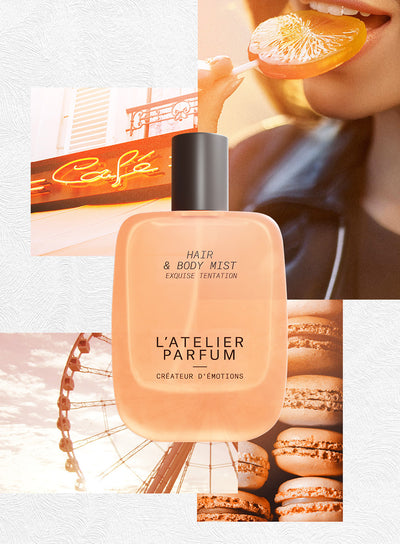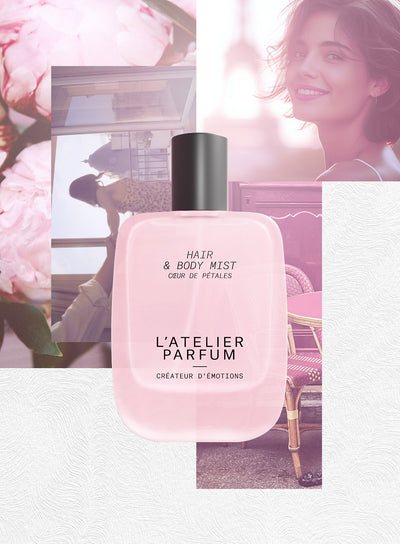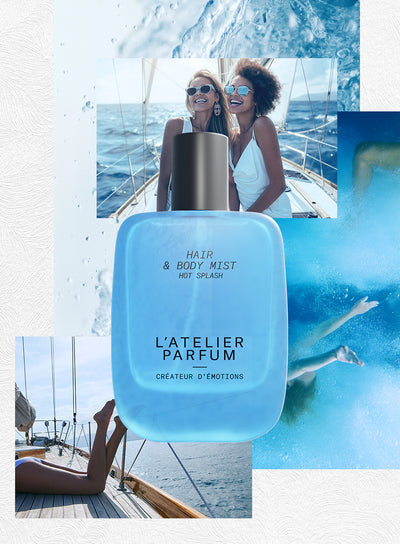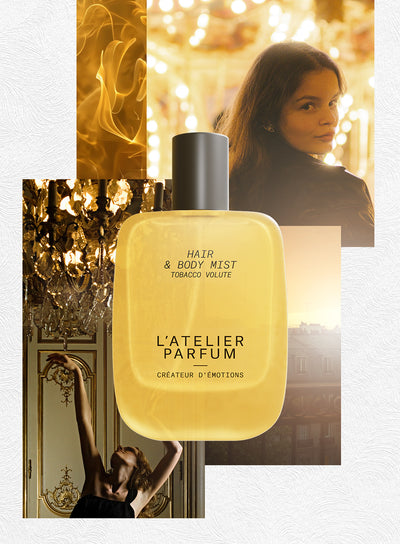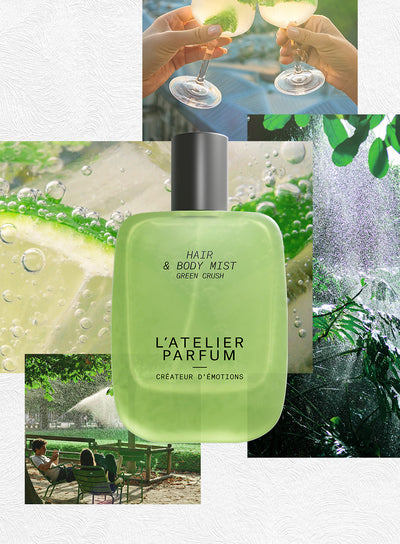- Histoire, Personnalités
- L'Atelier Parfum
The Great Names in Perfumery: François Coty
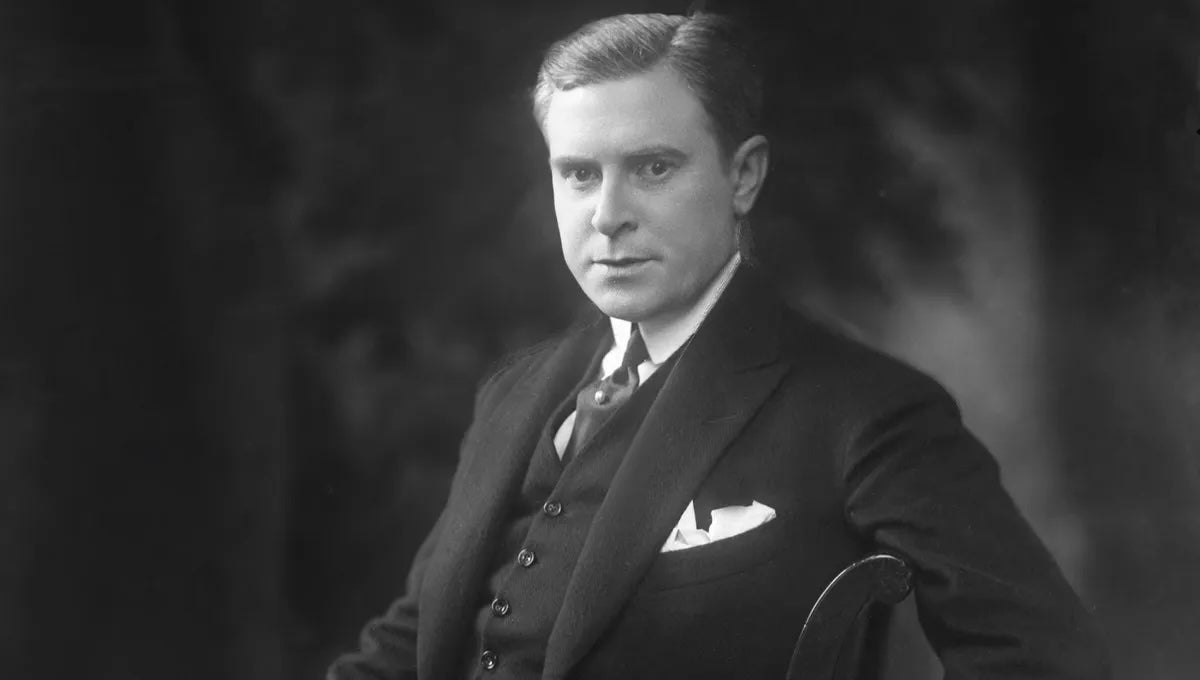
The arrival of François Coty marked a major turning point in the world of perfumery. His boundless ambition, exceptional intuition, and sharp organizational skills made him a truly extraordinary figure. With the air of a self-made man in the American style, he laid the foundations of modern perfumery. Thanks to him, the codes of olfaction, distribution, communication, and export were profoundly transformed.
The Beginnings: A Few Notions of Chemistry
Nothing seemed to predestine François Spoturno, of Corsican origin, for the world of perfume. Orphaned at a young age, he was raised by his grandmother. Forced to leave school at thirteen due to financial hardship, he never lost his determination. In 1900, he arrived in Paris and became the secretary to politician Emmanuel Arène, whom he had met during his military service, while also working as a fashion sales rep. That same year, he married Yvonne Le Baron, daughter of a Grand Prix de Rome laureate in engraving.
While the Exposition Universelle was in full swing in Paris, a visit to his friend, pharmacist Raymond Goëry, who lived near the Eiffel Tower, led him to discover the perfumery stand. He had no formal training in chemistry or perfumery, but spent his free time with his friend, who made artisanal cologne inspired by formulas from the Codex. Spoturno, critical of the perfumes of the time—which he found dull, heavy, and uninspired—was already envisioning the transformation he wanted to bring to the field.
He decided to cultivate his taste and talent in fragrance and began studying chemistry. He went to Grasse to train in natural raw materials and synthetic molecules, likely at the Chiris Laboratories, which would later become a supplier for the Coty brand.
The Choice of Name: Coty, His Mother’s Maiden Name
To launch himself into perfumery, Spoturno borrowed several thousand gold francs from his grandmother and chose to adopt his mother’s maiden name, Coty. In 1904, he set up shop on Rue de la Boétie, in a small Parisian space that housed a boutique, laboratory, and packaging workshop. He had neither significant capital nor the experience of the great fragrance houses, but he had a decisive asset: innovation.
Unknown to the general public, he was not bound by any existing codes or prestigious legacy. He bet on modernity and aimed to broaden the audience for perfume—traditionally reserved for high-society women and courtesans—to include the wider bourgeoisie. In his view, perfume should be part of Paris’s artistic and intellectual vitality.
For women, he imagined unprecedented fragrances. In 1904, he launched La Rose Jacqueminot, a soliflore (single-flower scent). The beginnings were difficult—no retailer wanted to take a risk on an unknown perfume. The story goes that in 1904, frustrated by the refusal of the director of the Grands Magasins du Louvre to smell La Rose Jacqueminot, Coty smashed a bottle on a counter, and the scent so enchanted the customers that they immediately bought up all the stock. Whether a true story or clever marketing, the fact remains that by the end of 1904, La Rose Jacqueminot was a success. From there, things accelerated: L’Origan in 1905, Ambre Antique, Chypre in 1917, and many others would follow.
A Bottle as Essential as the Perfume
Convinced that a perfume “should be as beautiful to look at as it is to smell,” Coty turned the bottle into a true artistic object. He was a pioneer in collaborations between perfumers and glassmakers. As early as 1910, he enlisted René Lalique, who created a crystal bottle adorned with feminine dragonflies for the fragrance Cyclamen. For Coty, the bottle should reassure while enhancing the taste and ego of the client. This collaboration sparked a new trend: giving each perfume its own unique bottle.
For labels and packaging, Coty worked with Draeger, a young fine art printer in Montrouge. Together, they printed real gold decorations on gilded paper. Draeger became the main designer of Coty’s boxes, often embellished with fine gold.
Coty also called on Jean Helleu, who painted artworks used for his packaging, including one of a Parisian woman that became the emblem of a powder box. Around 1910, the brand's first advertisement was a watercolor print by the artist.
A Meteoric Rise
Some of Coty’s products brought him worldwide fame, such as his compact powder box: by 1914, 30,000 units were being sold daily in the United States. His fortune was built first on perfumes, then extended to powders. His revenue grew quickly. He opened regional depots, launched a luxurious boutique on Place Vendôme, expanded internationally, and took part in major exhibitions, such as in Brussels in 1911 and Kiev in 1913.
During World War I, his success continued. Injured in 1915, he was discharged and took the opportunity to expand his facilities in Suresnes. He settled nearby at Château de Longchamp. In 1923, Coty became a major industrialist, turning his thriving business into a corporation and generating significant profits. He became one of the largest landowners in France.
A perfumer, politician, and press magnate after buying Le Figaro in 1922, François Coty reached incredible heights. He passed away in 1934, leaving behind a lasting revolution in the world of perfume.
The Beginnings: A Few Notions of Chemistry
Nothing seemed to predestine François Spoturno, of Corsican origin, for the world of perfume. Orphaned at a young age, he was raised by his grandmother. Forced to leave school at thirteen due to financial hardship, he never lost his determination. In 1900, he arrived in Paris and became the secretary to politician Emmanuel Arène, whom he had met during his military service, while also working as a fashion sales rep. That same year, he married Yvonne Le Baron, daughter of a Grand Prix de Rome laureate in engraving.
While the Exposition Universelle was in full swing in Paris, a visit to his friend, pharmacist Raymond Goëry, who lived near the Eiffel Tower, led him to discover the perfumery stand. He had no formal training in chemistry or perfumery, but spent his free time with his friend, who made artisanal cologne inspired by formulas from the Codex. Spoturno, critical of the perfumes of the time—which he found dull, heavy, and uninspired—was already envisioning the transformation he wanted to bring to the field.
He decided to cultivate his taste and talent in fragrance and began studying chemistry. He went to Grasse to train in natural raw materials and synthetic molecules, likely at the Chiris Laboratories, which would later become a supplier for the Coty brand.
The Choice of Name: Coty, His Mother’s Maiden Name
To launch himself into perfumery, Spoturno borrowed several thousand gold francs from his grandmother and chose to adopt his mother’s maiden name, Coty. In 1904, he set up shop on Rue de la Boétie, in a small Parisian space that housed a boutique, laboratory, and packaging workshop. He had neither significant capital nor the experience of the great fragrance houses, but he had a decisive asset: innovation.
Unknown to the general public, he was not bound by any existing codes or prestigious legacy. He bet on modernity and aimed to broaden the audience for perfume—traditionally reserved for high-society women and courtesans—to include the wider bourgeoisie. In his view, perfume should be part of Paris’s artistic and intellectual vitality.
For women, he imagined unprecedented fragrances. In 1904, he launched La Rose Jacqueminot, a soliflore (single-flower scent). The beginnings were difficult—no retailer wanted to take a risk on an unknown perfume. The story goes that in 1904, frustrated by the refusal of the director of the Grands Magasins du Louvre to smell La Rose Jacqueminot, Coty smashed a bottle on a counter, and the scent so enchanted the customers that they immediately bought up all the stock. Whether a true story or clever marketing, the fact remains that by the end of 1904, La Rose Jacqueminot was a success. From there, things accelerated: L’Origan in 1905, Ambre Antique, Chypre in 1917, and many others would follow.
A Bottle as Essential as the Perfume
Convinced that a perfume “should be as beautiful to look at as it is to smell,” Coty turned the bottle into a true artistic object. He was a pioneer in collaborations between perfumers and glassmakers. As early as 1910, he enlisted René Lalique, who created a crystal bottle adorned with feminine dragonflies for the fragrance Cyclamen. For Coty, the bottle should reassure while enhancing the taste and ego of the client. This collaboration sparked a new trend: giving each perfume its own unique bottle.
For labels and packaging, Coty worked with Draeger, a young fine art printer in Montrouge. Together, they printed real gold decorations on gilded paper. Draeger became the main designer of Coty’s boxes, often embellished with fine gold.
Coty also called on Jean Helleu, who painted artworks used for his packaging, including one of a Parisian woman that became the emblem of a powder box. Around 1910, the brand's first advertisement was a watercolor print by the artist.
A Meteoric Rise
Some of Coty’s products brought him worldwide fame, such as his compact powder box: by 1914, 30,000 units were being sold daily in the United States. His fortune was built first on perfumes, then extended to powders. His revenue grew quickly. He opened regional depots, launched a luxurious boutique on Place Vendôme, expanded internationally, and took part in major exhibitions, such as in Brussels in 1911 and Kiev in 1913.
During World War I, his success continued. Injured in 1915, he was discharged and took the opportunity to expand his facilities in Suresnes. He settled nearby at Château de Longchamp. In 1923, Coty became a major industrialist, turning his thriving business into a corporation and generating significant profits. He became one of the largest landowners in France.
A perfumer, politician, and press magnate after buying Le Figaro in 1922, François Coty reached incredible heights. He passed away in 1934, leaving behind a lasting revolution in the world of perfume.

